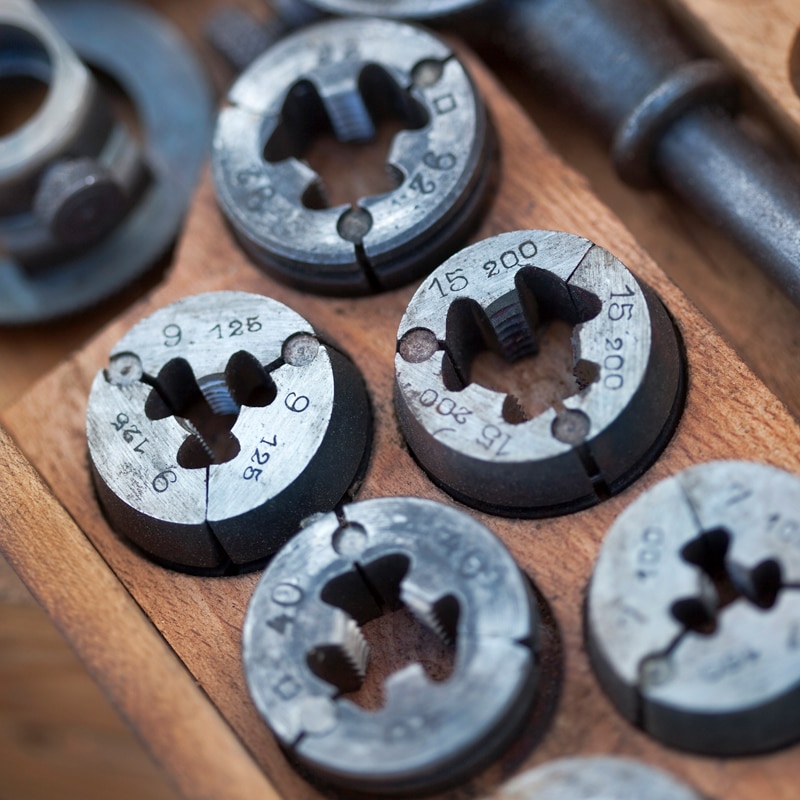
Many companies use stamped metal parts as part of their manufacturing process. This involves sheets of metal being placed under a cutting press resulting in identical component pieces being made in a single motion. It is a fast and effective method, much in use in mass production industries.
Of course, many of those component parts require some sort of plating or finish before they can be put to use. Here at Karas Plating, we offer a wide variety of plating services suitable for all kinds of metal parts.
When it comes to stamped metal components, the main question is: do we plate the metal before or after we have stamped out the metal parts?
It is an important question.
In this article, we hope to provide you with an answer…

Pre-Plating Method
This is exactly what it sounds like – we take your sheet metal substrate and apply our various metal plating techniques to the entire piece, coating it with an even, uniform layer of whichever metal you deem appropriate. This plated sheet metal is returned to you, ready for processing and stamping.
The advantage of pre-plating is that the process is quicker and often more cost effective, as we are only performing a single process. We can also guarantee a uniformity of coating across the whole substrate, which is not always possible with smaller components.
The disadvantage is that the edges of your stamped components (where the press has sheared through the metal) will not be coated. For some applications, this is fine. If you are creating parts for a high-risk environment, you may prefer post-plating.

Post-Plating Method
In this process, the stamped metal parts have already been pressed and come to us for plating. Depending on the size and shape of the components, we can use rack plating or barrel plating to deliver the finish that they need.
The main advantage of post-plating is that the whole of the components are fully coated in your metal of choice. This provides full protection to the pieces in question, particularly important when it comes to parts that are plated for corrosion-resistance and similar qualities.
In terms of disadvantages, it can be more costly, as it requires more of the plating material to fully-coat the components.



